
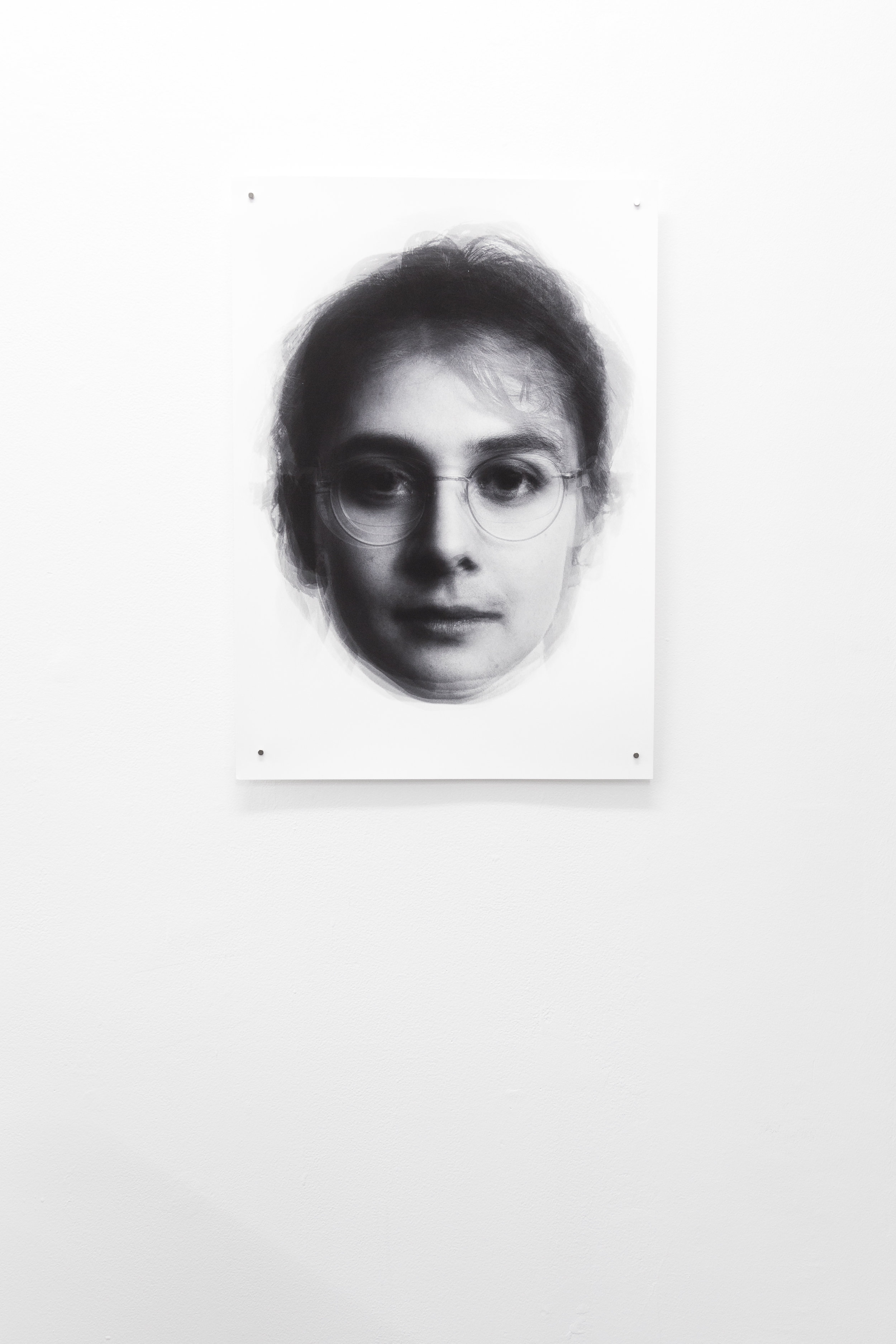
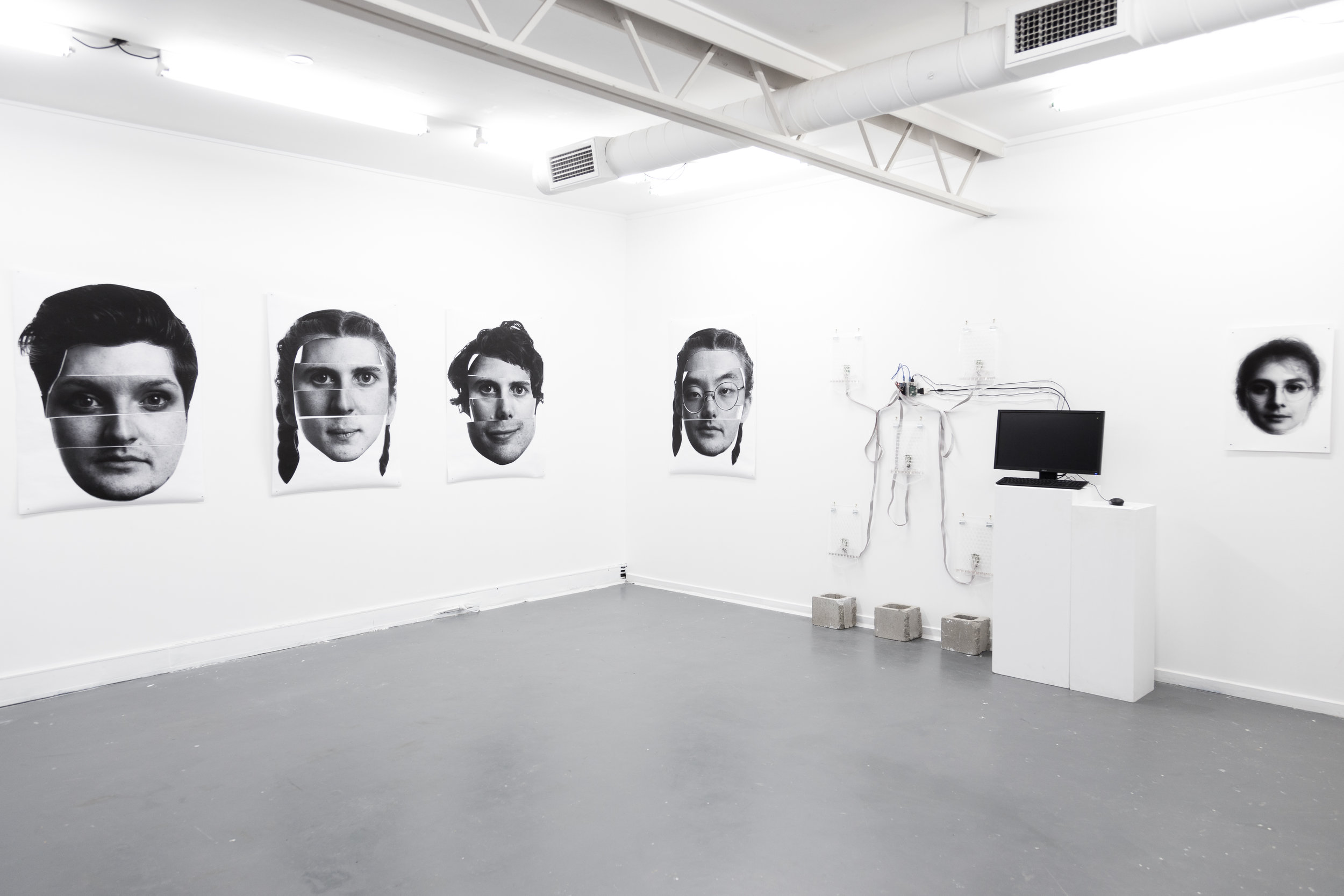

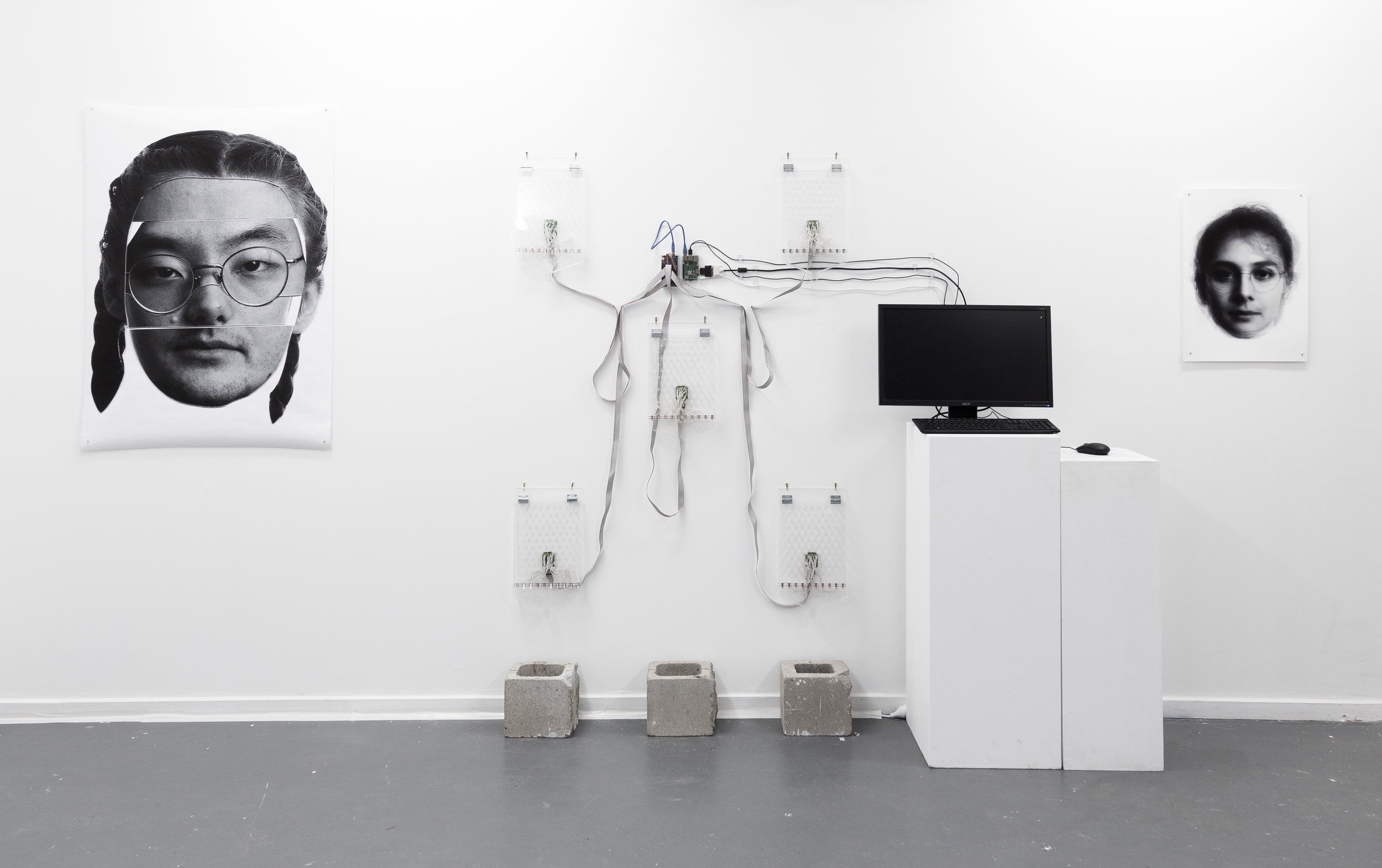

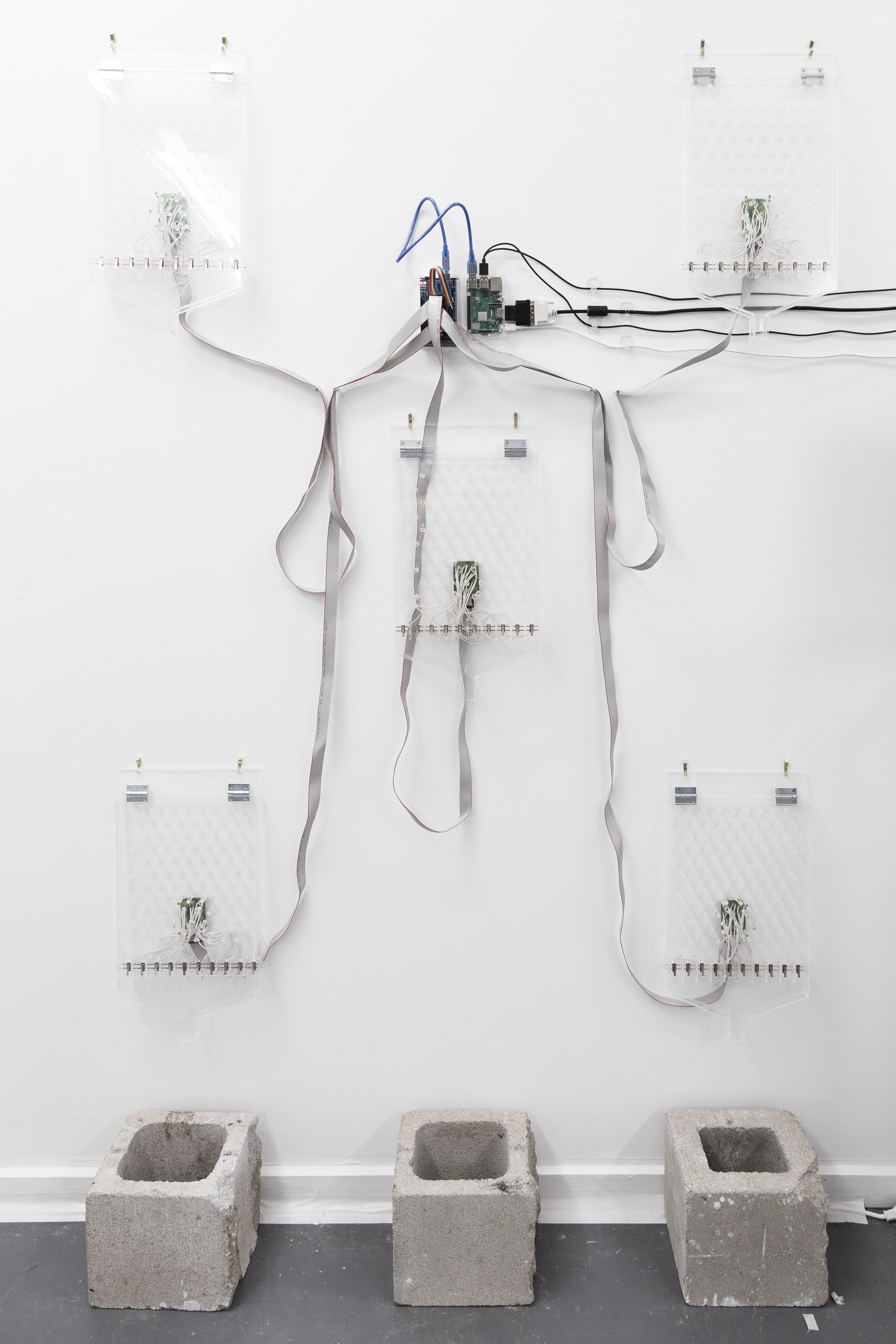
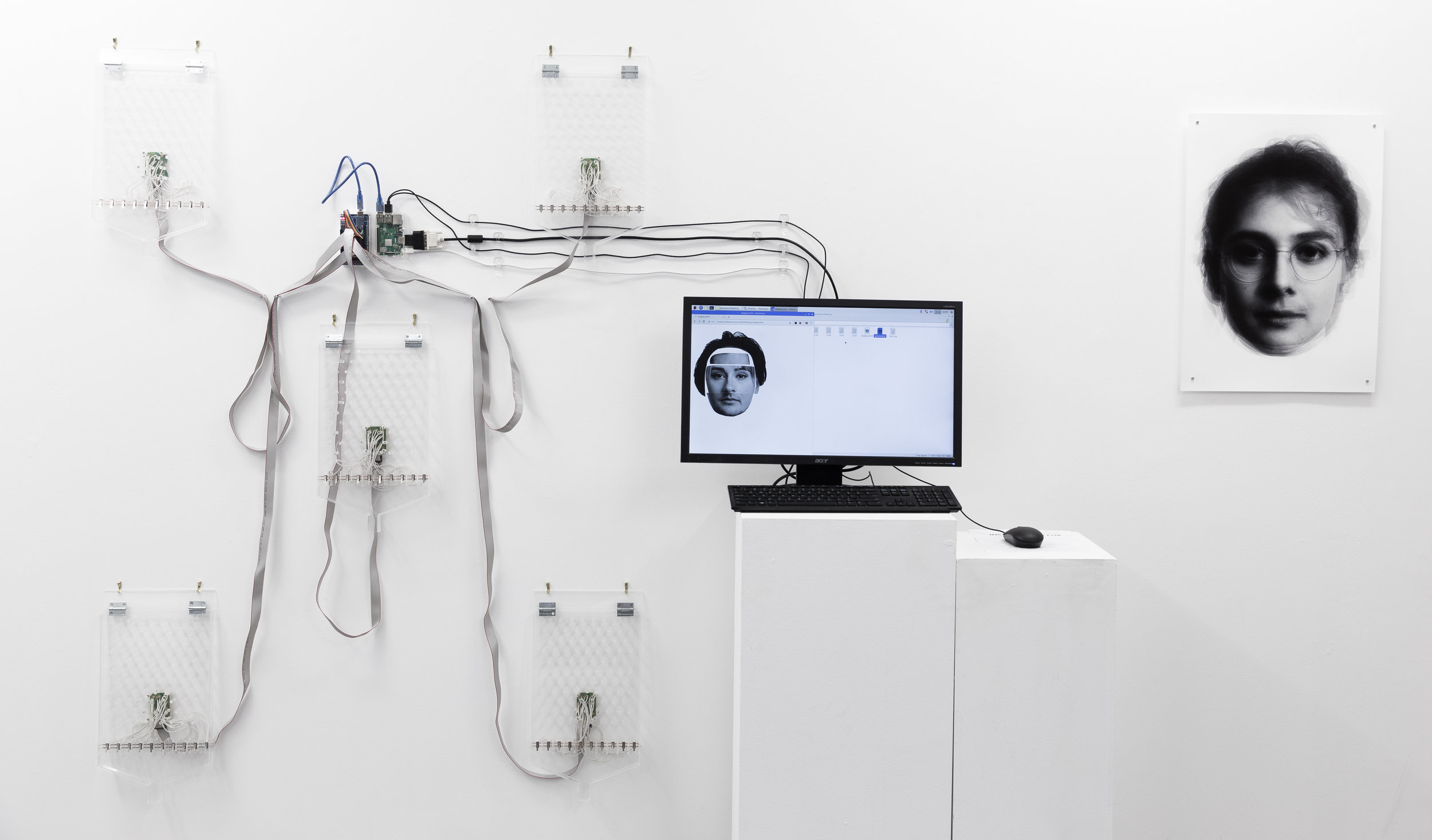
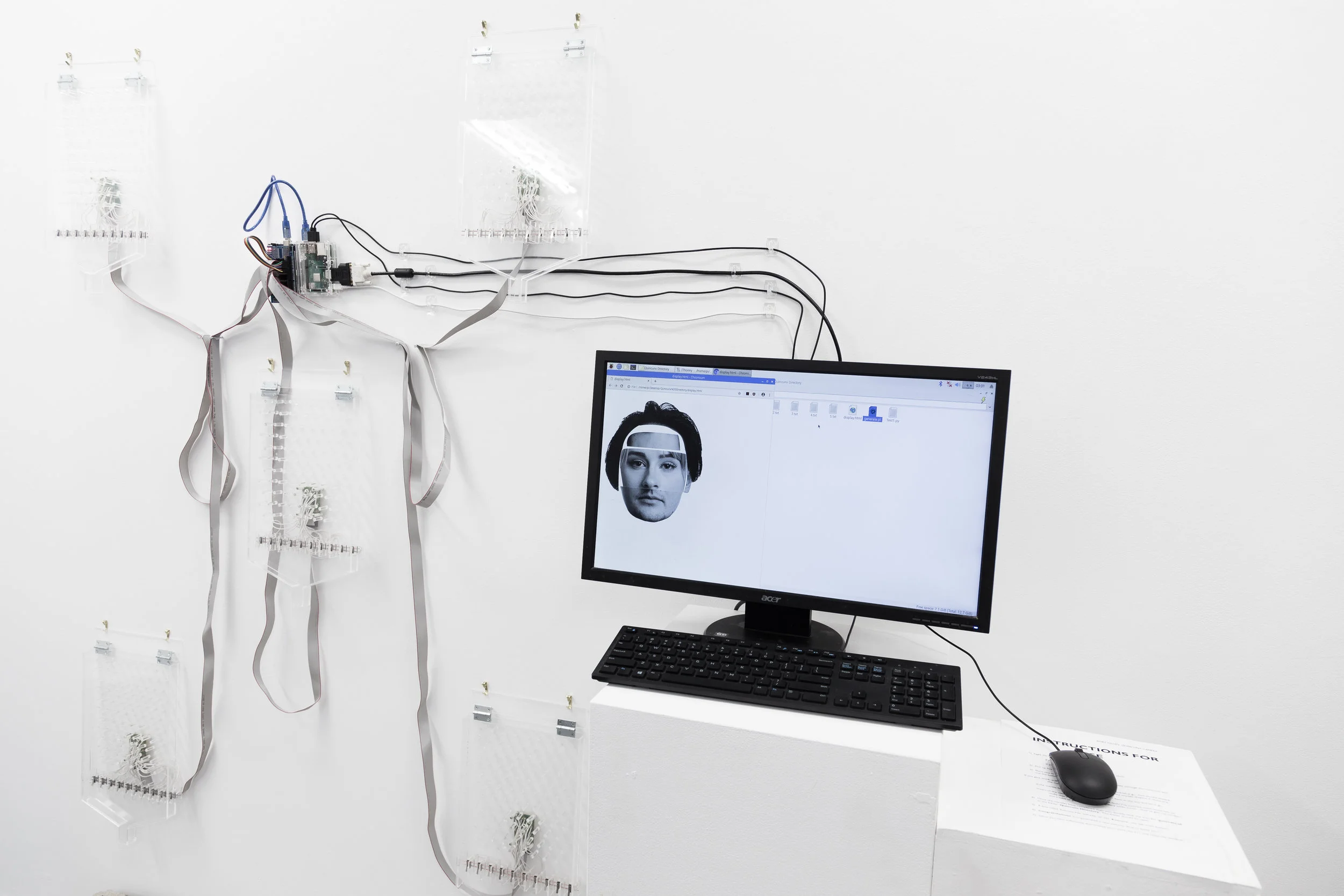

Taking inspiration from the 2019 styleGAN image generation site thispersondoesnotexist.com, The Quincunx Camera explores user agency and systemic bias within generative machine learning. The ‘camera’ uses an array of peg boards (known as Galton boards) and marbles to ‘randomly’ generate a face from a dataset of facial elements gathered from friends and colleagues, with my own face at its center.
Invented in 1874 by the ‘father of eugenics’ Francis Galton, the Galton board was designed to demonstrate the central limit theorem. Although each path a marble could take though the board consists of a random series of boolean actions, with a large enough sample size the distribution of marbles eventually forms a curve of normal distribution.
The Quincunx Camera re-appropriates the Galton board from an argument put forward by the father of eugenics and instead uses it as a demonstration of the eugenic histories and phrenological assumptions contained within and perpetuated by machine learning algorithms. Over the period of its installation the camera will have hundreds of marbles each taking a path free from human bias towards a unique face, and yet the average of all the faces it creates will overwhelmingly resemble that of its creator.